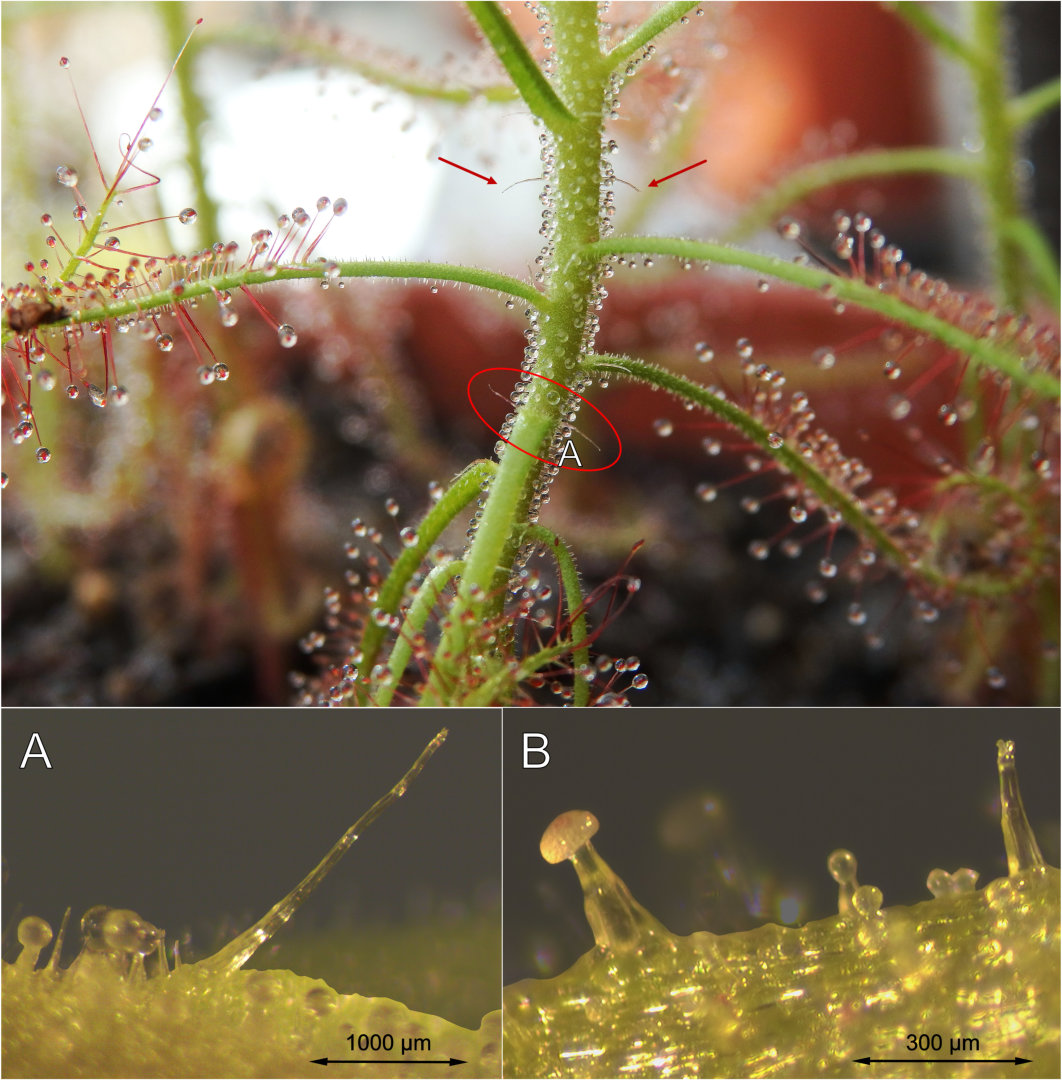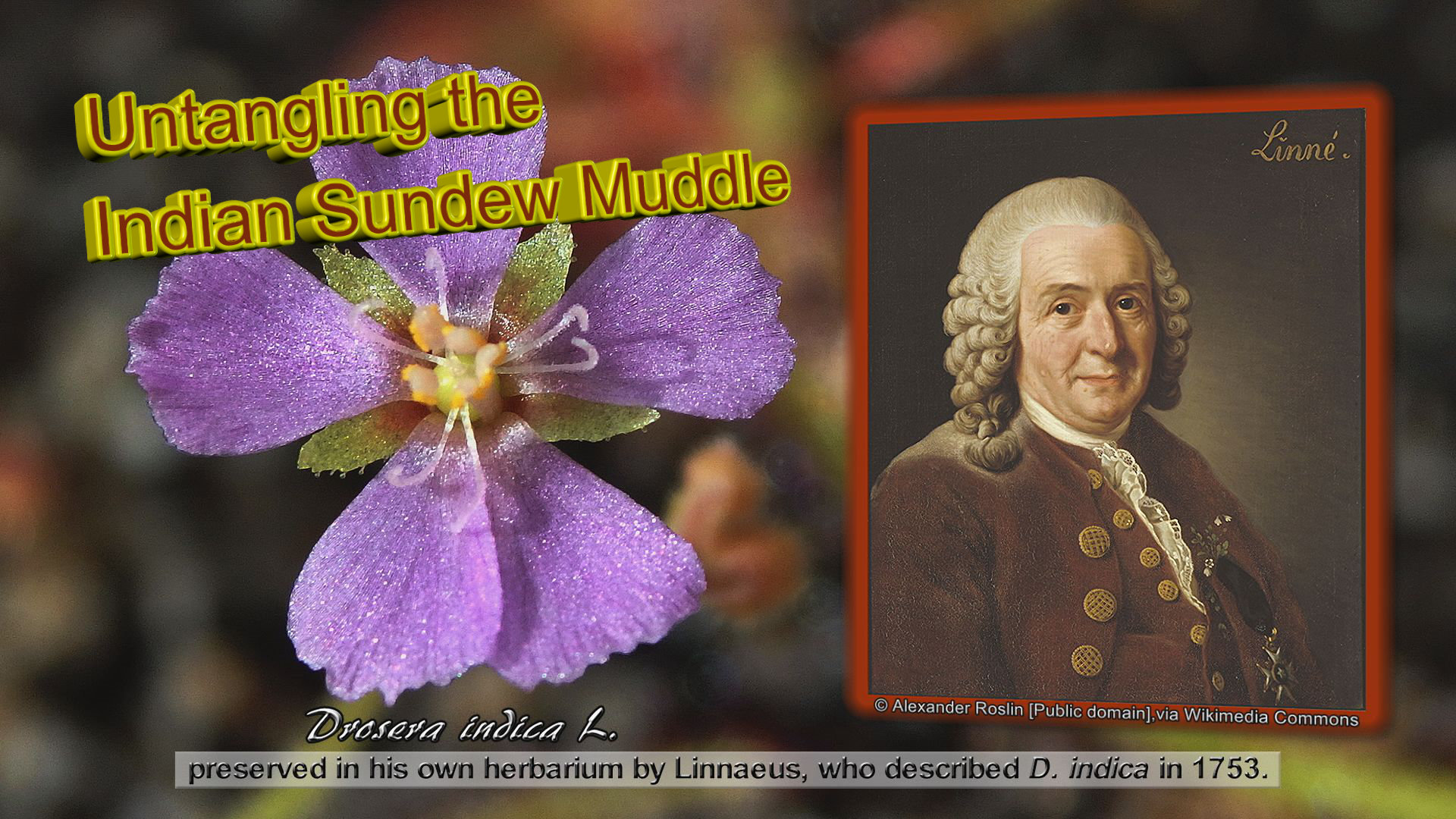|
 Sundew chemistry and emergence updates Sundew chemistry and emergence updates
Jan Schlauer, Siegfried R. H. Hartmeyer, Irmgard Hartmeyer, Holger Hennern, Anja Hennern (2017). Carnivorous Plant Newsletter Vol. 47/1: 10-17.
Keywords: Drosera, metabolism, phytochemistry, naphthoquinones, chemotaxonomy, micromorphology, emergences.
Jetzt verfügbar / now available: Der vollständige Text / Full text (PDF)

Introduction
Plumbagin
and 7-methyljuglone are characteristic acetogenic (= derived from
acetic acid) naphthoquinones (see Scheme 1) that allow a chemotaxonomic
delimitation and the distinction between sundew (Drosera L.) species or
species groups (Zenk et al. 1969; Durand & Zenk 1974; Culham &
Gornall 1994; Schlauer et al. 2005). This has recently (Schlauer et al.
2017) been applied to several Australian species in Drosera sections
Arachnopus Planch. (the “D. indica L. complex”) and
Coelophylla Planch. (D. glanduligera Lehm.). By extending these studies
to further accessions and species, some new and interesting insights
into the chemical diversity of the genus were gained. In addition, the
characteristic leaf and stem emergences of all examined Arachnopus
species arefeatured in detail by microscopy images.
|
Excerpt: Drosera indica emergences
 Figure 7: Drosera indica. Background: mature stem with leaf bases showing lateral “stipules” (actually emergences) at leaf bases (red arrows and oval); A: double-tipped cap with elongated stalk at leaf base with stalked glands and short double-tipped caps; B: mushroom-emergence (left), shorter stalked glands and medium sized double-tipped cap.
Figure 7: Drosera indica. Background: mature stem with leaf bases showing lateral “stipules” (actually emergences) at leaf bases (red arrows and oval); A: double-tipped cap with elongated stalk at leaf base with stalked glands and short double-tipped caps; B: mushroom-emergence (left), shorter stalked glands and medium sized double-tipped cap.
We produced two documentary films for YouTube, to accompany the article regarding the emergences.
Just click on the pictures to view the films on YouTube:

&

|
References
Culham, A., and Gornall, R.J. 1994. The taxonomic significance of
naphthoquinones in the Droseraceae. Biochem. Syst. Ecol. 22: 507-515.
Durand, R., and Zenk, M.H. 1974. The homogentisate ring-cleavage
pathway in the biosynthesis of acetate-derived naphthoquinones of the
Droseraceae. Phytochemistry 13: 1483-1492.
Putalun, W., Udomsin, O., Yusakul, G., Juengwatanatrakul, T., Sakamoto,
S., and Tanaka, H. 2010. Enhanced plumbagin production from in vitro
cultures of Drosera burmanii using elicitation. Biotechnol. Lett. 32:
721-724.
Schlauer, J., and Fleischmann, A. 2016. Chemical evidence for hybridity in Drosera (Droseraceae).
Biochem. Syst. Ecol. 66: 33-36.
Schlauer, J., Hartmeyer, S.R.H., and Hartmeyer, I. 2017. Unexpected
discovery of 7-methyljuglone (ramentaceone) in several Australian
sundews. Carniv. Pl. Newslett. 46: 20-22.
Schlauer, J., Nerz, J., and Rischer, H. 2005. Carnivorous plant chemistry. Acta Botanica Gallica 152: 187-195.
Zenk, M.H., Fübringer, M., and Steglich, W. 1969. Occurrence and
distribution of 7-methyljuglone and plumbagin in the Droseraceae.
Phytochemistry 8: 2199-2200.
|
|



